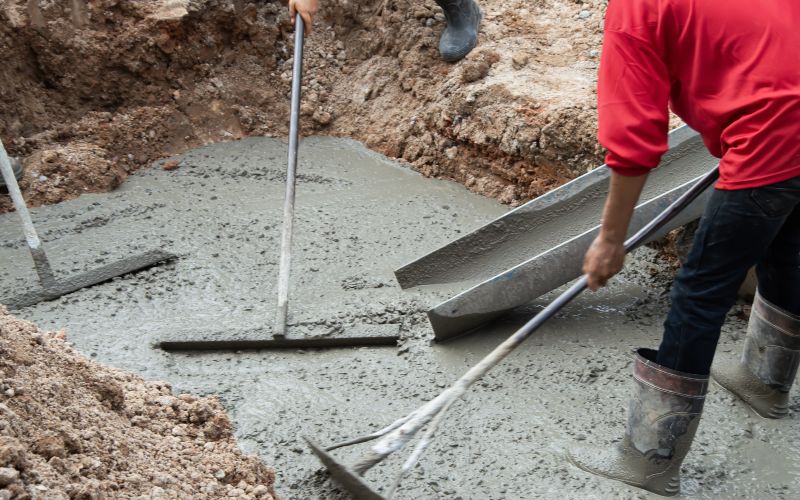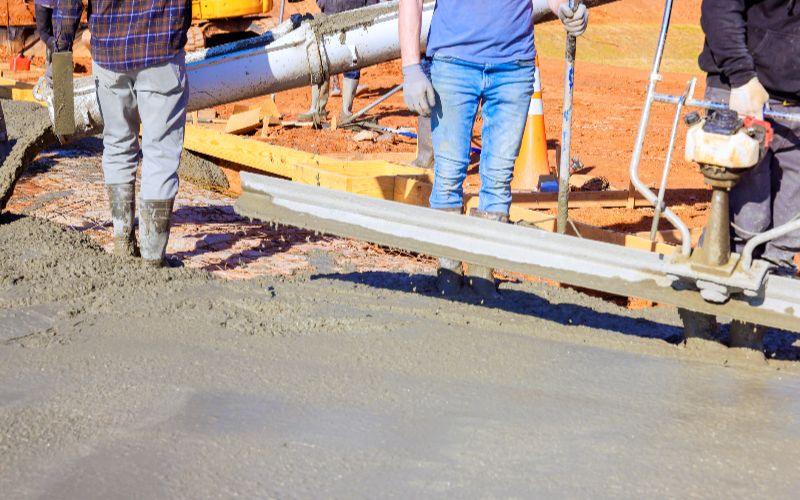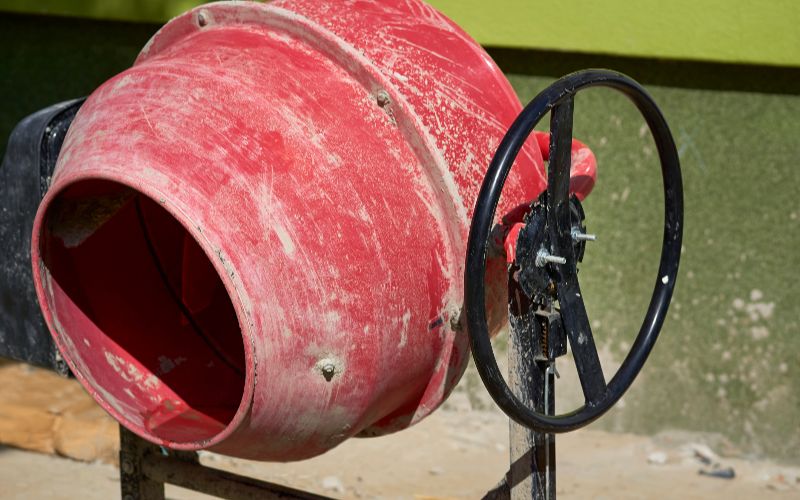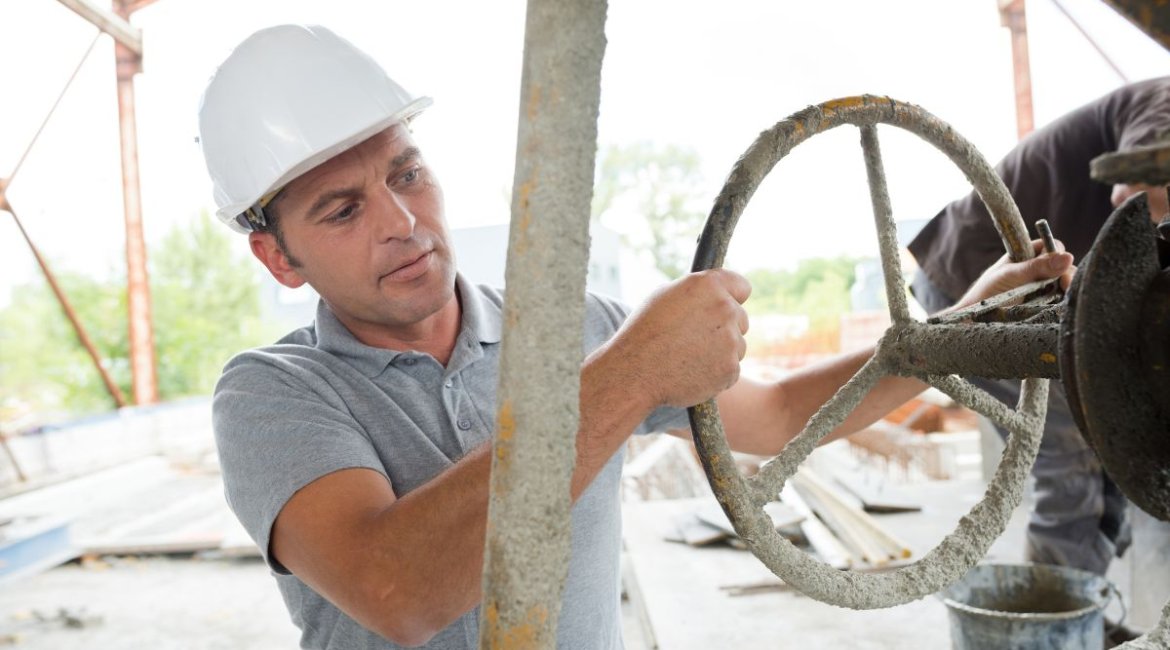Concrete is, without a doubt, the backbone of the construction sector here in SA and the rest of the world. From laying suburban driveways to making high-rise slabs, concrete is the glue that holds it all together, but for anyone who has worked on a job site during the heat of SA summers knows that the hot weather conditions can create some real challenges. Think about high ambient temperatures, low humidity, and dry winds that can all accelerate the hydration process and the loss of moisture in concrete. Now, for smaller contractors who rely on portable concrete mixers, this problem is even more acute: when you work with smaller batches, smaller crews and tight deadlines.
In this BS Power guide, we’re going to deconstruct everything you need to know about using concrete mixers in hot weather conditions, how the temperature and climate can affect slump and set time, some practical methods for maintaining quality, and curing strategies to help prevent concrete cracks. We’ll also cover some productivity hacks, compliance notes and tips that are specific to conditions here in South Africa.
Why Does Hot-Concreting Matter?
Concrete is notably sensitive to the environment in which it’s being used, and nowhere is this more evident than on job sites in South Africa during the peak of our summer months. As temperatures rise, the hydration process in cement speeds up drastically, and this has borne three major consequences:
Reduced workability In Concrete Mixers
In cooler conditions (around 20 °C), a freshly mixed batch from a 400L concrete mixer drum will commonly remain in a workable state for around 40 -45 minutes. On the other hand, at temperatures between 32–35 °C, say for example in regions such as Limpopo or KZN’s midlands, that window can shrink to as little as 15 – 20 minutes. In this case, crews will find themselves racing against time to place, level, and finish before the batch stiffens.

Increase Risk Of Cracking In Concrete Mixers
Rapid evaporation, caused by hot, dry winds, can pull water from the surface of the concrete before proper hydration can take place. When conducting small pours, such as home driveways or patios, you’ll often see hairline cracks forming within 24 hours if the curing doesn’t happen immediately. For instance, a 360L concrete mixer batch, which yields roughly 0.3 m³, can begin showing surface drying in less than 10 minutes if you leave it unprotected.
Weaker Strength In The long term
When compensating for slump loss, many crews are tempted to add “just a splash” of extra water. Now, while this might restore some short-term workability, it will dilute the water-to-cement ratio and can result in weaker concrete. In fact, a 5-10% increase in water added can drop the compressive strength by several MPa, which is the key difference in a driveway that will last 15 years vs one that needs patching in half a decade.
How Temperature And Wind Affect Concrete And Your Concrete Mixers
Essentially, concrete sets and hardens through hydration, a chemical process that occurs when water reacts with cement. As temperatures rise, this reaction accelerates significantly. For example, each increase of about 10 °C can cause the rate of evaporation to double. While moisture loss at 20 °C can generally be controlled, at temperatures between 30 and 35 °C, water can be drawn out of the mix even before the concrete is placed. Additionally, higher temperatures dramatically reduce the initial setting time; at 20 °C, concrete may set in 4 to 6 hours, but at 35 °C, this window shrinks to 2 hours or less.
This poses a challenge for smaller contracting teams, as the concrete may become too stiff to finish properly before the work is done. Furthermore, slump loss becomes more pronounced in these hot and windy conditions; a mix that starts with a 100 mm slump can drop to just 60 mm in as little as 15 minutes if exposed to hot, dry air.
For instance, small concrete mixers like a 360L or 400L drum, where each batch can produce around 0.3–0.35 m³, this loss happens fast. If the placement is delayed by as little as 10 minutes, the first wheelbarrow poured might behave very differently from the last, which can cause inconsistent finishing across a slab.
The South African Context
Now, when we consider South Africa’s unique climate challenges, say for instance the Free State or the Northern Cape, the summer heat can often pair with dry, gusty winds that can increase the rate of evaporation. SANS 10400 cites the need for “special precautions” in these conditions, which include shade, proper curing processes, and tighter batching schedules.
Let’s imagine for a minute, a three-person crew working in Bloem using a 400L concrete mixer. By the time they might return with the last wheelbarrow, the slump has already dropped dramatically. Now, without an extra pair of hands for placement or during the curing process, they could run the risk of cold joints or even early cracking, which are costly errors on even the smallest of jobs.
Managing Slump Control With Small Concrete Mixers
Slump refers to the simplest way of measuring workability, but in hotter conditions, it becomes a moving target. For smaller contractors, getting this step is crucial, as every batch from a 360L or 400L mixer has to be consistent if you want a slab that looks uniform and performs well over the long term.

How To Accurately Measure Water
It remains common practice for small crews to add a “splash of water” from a hose, but this habit almost always leads to inconsistencies in concrete mixers. Instead, it is recommended to use marked buckets or jugs for each batch, as a 400L mixer producing 0.35 m³ typically needs about 60 litres of water. Installing a basic inline flow meter on your water source, an affordable device available for less than R500 at local suppliers, can quickly pay for itself by reducing waste in just one job.
Additionally, keeping a log of every batch on site helps determine the best water measurements for local aggregates, ensuring greater consistency and quality in your mixes.
Why Is “A Splash More” So Dangerous?
The term “retempering”, which refers to adding more water after mixing, is one of the fastest ways to weaken concrete. Now, a seemingly harmless addition of 5L on a 360L batch can change the water-cement ratio enough to reduce the compressive strength by 10-15% and this can lead to hairline cracks within months as opposed to decades.
How To Set Up Your Site: Shade, Staging, & Haul Paths
On hotter summer days, time is a crew’s most important asset. Each and every minute between the mixing process and placing reduces slump, increases segregation risk, and also puts notable pressure on your crew. By setting up your site for efficiency, you’ll be able to make the difference between a neat finish and a patchwork of ugly, cold joints.
If you leave a 360L or 400L mixer in direct sun, you can actually heat up the drum and the aggregates by several degrees, and this additional heat can transfer into the concrete, which will accelerate the set time before it even leaves the mixing drum. Ensure that you position your mixer under a canopy, gazebo, tarp, or even a shade net. This won’t only protect the concrete, but it will also make the working conditions much more bearable for your crew.

Staging Your Materials The Smart Way
Ensure that you keep your aggregates, cement bags, and your water supply as close as possible to your concrete mixer. For instance, a crew of three can cut cycle times by 2-3 minutes per batch by staging sand and stone within one step of the loader’s reach. So, basically over a 10-batch pour, you’ll save thirty minutes, which is enough time to avoid any cold joints on a 30 m² slab.
Once your mix is ready, the pathway for hauling is crucial. Ensure that you level out wheelbarrow runs, and make use of compacted sand lanes, or even temporary boards, to reduce the risk of tipping and to save time. For large slaps, we suggest pouring closest to the concrete mixer first, and work outward, so your crew isn’t dragging heavy barrels across any fresh concrete.
Planning For Productivity: Your Output Vs Time
When working under high temperatures, productivity is not only about how quickly your mixer can produce batches, it’s also about how fast your crew can place, finish and cure before the concrete goes stiff. Now, a 400L drum mixer might technically produce around 3 m³ per hour, but in the heat of South African summers, the real safe output is often lower.
Why Does Heat Shrink Your Window?
Say, for instance, at 20 °C, construction crews commonly have around 90-120 minutes to place and finish before the initial set, but at 30–35 °C, this window can diminish to about 45-60 minutes. Also, if your batching processes are not tightly planned, the last wheelbarrow load might be too stiff to compact correctly, which will create weak spots in the slab.
Concrete Mixers Available At BS Power
For South African contractors and builders, here at BS Power, we offer two notably versatile concrete mixer models that balance productivity, durability, and, of course, affordability, and both are well-suited to job sites here in SA:
The Honda GX160 360L Concrete Mixers
This mixer is powered by a reliable Honda GX160, which is lauded for its fuel efficiency and easy starts in all conditions. It’s durable, and its heavy-duty drum and sturdy frame can withstand frequent use on any site.
Baumax 400L Concrete Mixers
This mixer has a robust Baumax motor that has been built for consistent output even on the heaviest of workloads. It’s also durable and has a larger drum that can accommodate larger batches, which reduces cycles needed for medium jobs.
Why BS Power Is Your South African Concrete Mixers Supplier
At BS Power, we have built a reputation for stocking reliable, high-performance concrete mixers that contractors can trust. Every mixer we stock has been carefully curated with durability, fuel efficiency, and ease of maintenance in mind, to make sure all our clients get the most out of their investment. We stock engines from proven brands such as Honda and Baumax, and these machines have been designed to handle the heat, dust, and demanding conditions of job sites here in South Africa.
Beyond the products we have on offer, at BS Power, we offer competitive pricing, nationwide support, and quick access to spare parts, keeping your downtime to a minimum. So, whether you’re an SME builder pouring foundations or a contractor taking on larger slabs, at BS Power, we will provide you with the right concrete mixers for your workload. Be sure to visit our website to view our concrete mixer range.






